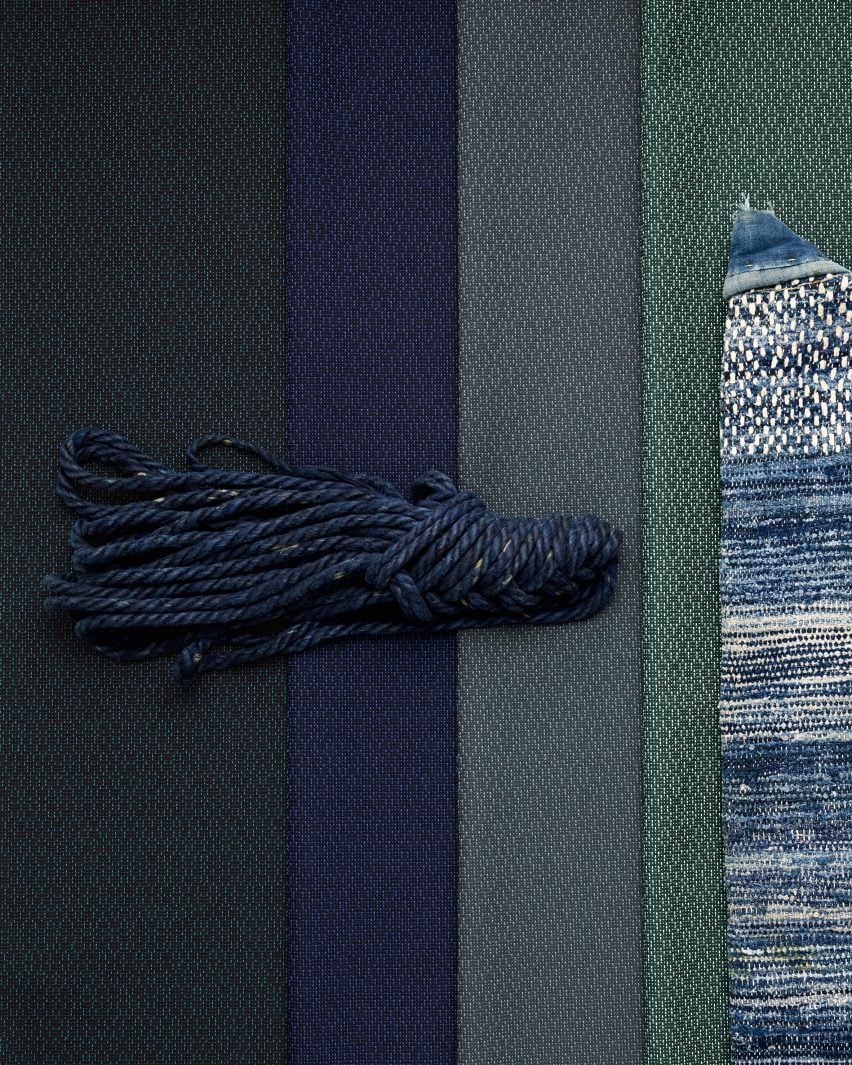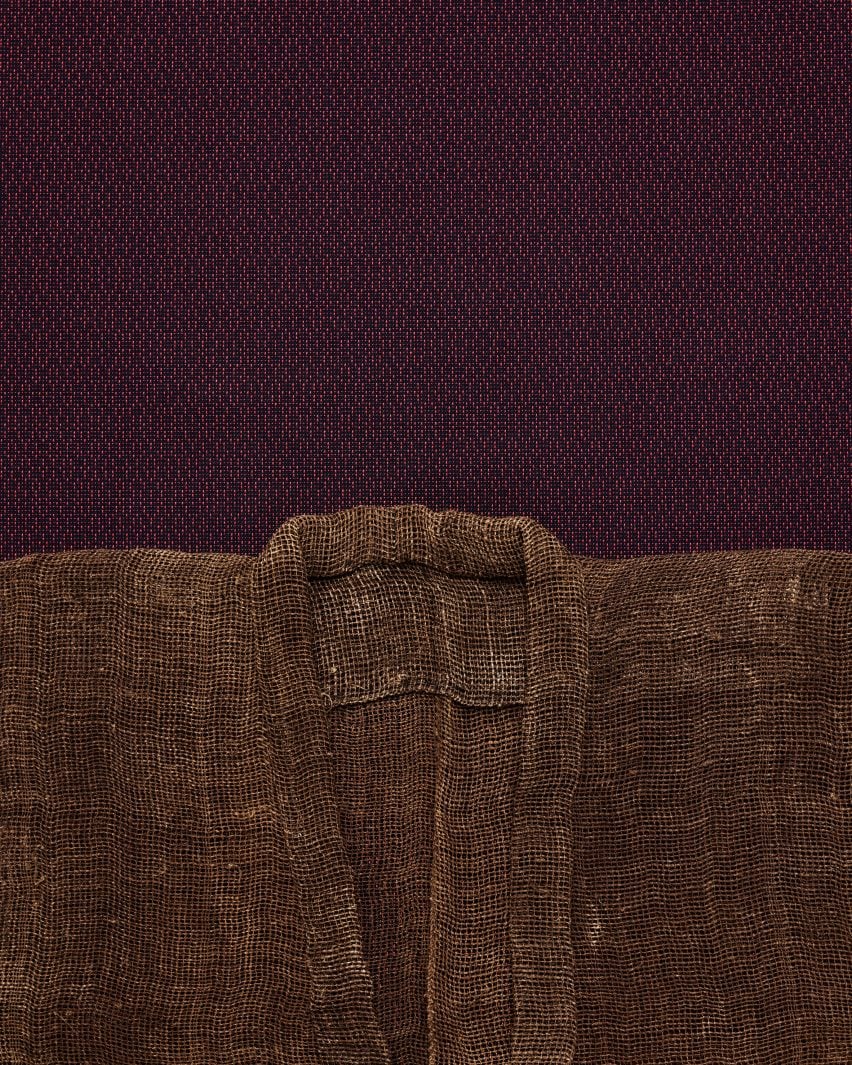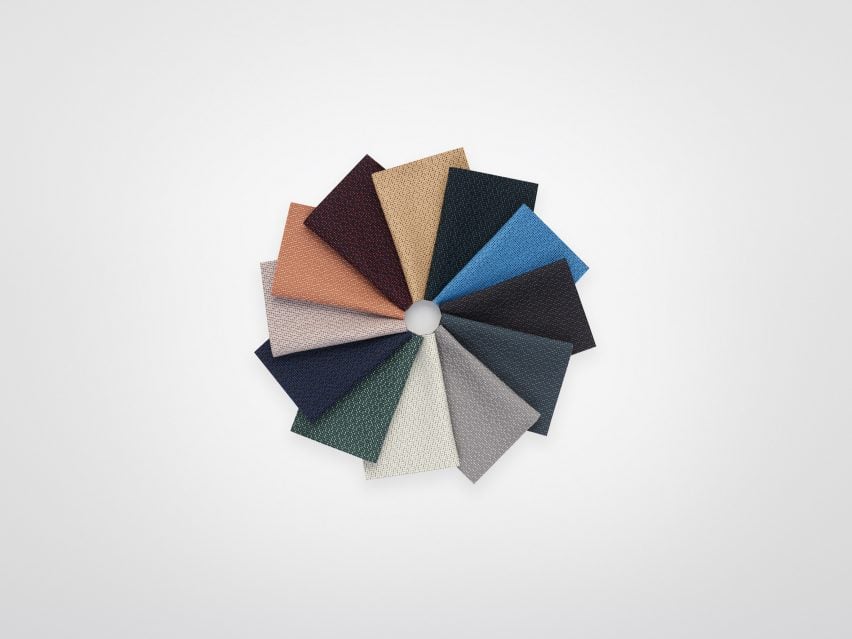Textile brand Kvadrat has worked with designer Teruhiro Yanagihara to launch its first recycled polyester textile made of waste fabric instead of the usual plastic bottles.
Kvadrat refers to Ame as its first “textile-to-textile” recycled polyester, which the company says is an important step in closing the loop within the textile lifecycle.
Usually, waste PET plastic bottles are made into recycled polyester, while waste polyester is made into other products – a process that is sometimes known as “downcycling” because the material loses quality with each round of recycling.
Kvadrat itself currently recycles some of its textile waste into solid boards and acoustic panels while using recycled bottles to make a polyester textile.
To create a textile product from textile waste, Kvadrat turned to chemical recycling – a promising but controversial alternative to mechanical recycling that opens up wider uses for waste plastics.
In Kvadrat’s method, known as depolymerisation, the polyester is broken down into its molecular building blocks and then built up again to regain the quality of the virgin material.

Purified from its past chemicals and dyes, the material takes the form of polyester chips that are spun into yarn to make the new textile.
Kvadrat uses a mix of post-consumer and post-industrial polyester waste in the process.
“To innovate, we must disrupt the way we source raw materials and create textiles,” said Kvadrat Innovation Lab manager Lea Nordström.
“Material diversity is key at Kvadrat and we work with a wide range of recycled raw materials,” she added. “But we believe that the future will be circular. And so for Ame, we developed our first yarn made from polyester textile waste.”

While much of Kvadrat’s catalogue is made with natural fibres, polyester is usually chosen for high-performance textiles because it is durable, lightfast and resistant to stretching, shrinking and wrinkling.
For the look of Ame, Kvadrat approached Yanagihara, attracted by his research into the Silk Road and the Japanese mending technique sashiko, which is traditionally used to repair kimonos.
“Ame is a fresh innovation made entirely out of textile-to-textile waste and a nice connection with sashiko, an old mending technique that also is about preserving pieces of fabrics,” Kvadrat design vice-president Stine Find Osther told Dezeen.

Yanagihara’s design for Ame involves weaving together two different yarn colours and thicknesses to make a delicate pattern reminiscent of hand stitching.
The colour palette is also inspired by an aspect of traditional Japanese dress known as “kasane no irome”, which refers to the layering of kimonos in precise colour combinations.
Chemical recycling technologies are controversial, largely because they generate large amounts of toxic waste and emissions, such that critics argue more harm than good is done.
The depolymerisation process used by Kvadrat requires the application of both high heat and chemicals. The brand admits that the energy use is high but said it expects this to improve over time.
“It will always require a great deal of energy to facilitate any sustainable innovation, especially in the beginning until the right volumes and flow are mastered,” said Osther.
“But as we see it, it is essential to decrease the amount of virgin fossil fuel-based material that we use, whether it is recycled or bio-based. We will need both in the future.”

“The main priority will always be that our products are safely produced and safe to use, and that we never compromise on the longevity of the textile,” Oster concluded.
Ame is shortlisted in the material innovation category of Dezeen Awards 2024.
Kvadrat CEO Anders Byriel told Dezeen earlier this year that the company was measuring its environmental footprint scientifically in line with the Science-Based Targets Initiative (SBTI). “We want to be the undisputed leader in sustainability,” he said in the interview.

